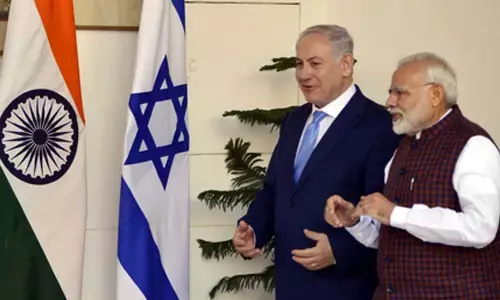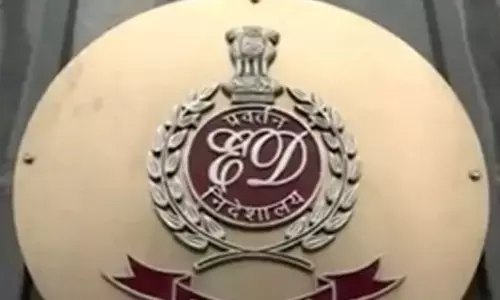Myanmar: 3 Years of Coup & Civil War

The Myanmar military, disputing the results of the 2020 election, seized power on 1 February 2021, triggering widespread civil unrest and armed resistance. Despite international condemnation, Myanmar remains mired in violence, with uncertain prospects for resolution and questions about its future trajectory
On 1 February 2021, Myanmar’s armed forces (Tatmadaw) rebuffed the landslide electoral triumph of the National League for Democracy (NLD) in 2020 and assumed control of the government. The allegation of widespread fraud in the 2020 elections precipitated a crisis wherein the military, wielding substantial control over the government as a result of a constitution it authored, declined to acknowledge the election outcomes. The coup incited widespread civil disobedience, protests and armed resistance.
The Civil War
After the 2021 coup, opposition activists and former lawmakers formed a shadow government, known as the National Unity Government (NUG). The NUG has been working to mobilise resistance and coordinate the actions of local militias, known as People’s Defense Forces (PDFs). PDF is a collective term for three types of armed groups that have emerged since the coup—PDFs; Local Defense Forces (LDFs), and People’s Defense Teams (PDTs). PDFs are larger armed units formed or recognised by the NUG, operating under joint command systems with several ethnic armed organisations.
In June 2019, three armed groups—the Arakan Army (AA), the Myanmar National Democratic Alliance Army (MNDAA), and the Ta’ang National Liberation Army (TNLA), formed an alliance called ‘The Three Brotherhood Alliance’.2 The alliance rose to prominence in 2023 in resisting the Burmese junta. On 27 October 2023, the alliance launched Operation 1027, an offensive against the junta in northern Shan state. The alliance and other ‘resistance forces’ control a substantial part of the country as of now.
The civil war has precipitated a grave humanitarian crisis. The UN reports that over 2.6 million people are now displaced within Myanmar, with nearly 800,000 of these displacements occurring since late-October 2023.5 In India, approximately 59,200 individuals from Myanmar’s North-West region have sought protection since February 2021. Of these, around 5,500 are in New Delhi and have registered with the UNHCR.
The United Nations reported that ‘security forces in Myanmar have caused the deaths of at least 1,600 individuals and have detained more than 12,500’7 within one year of the coup. A report by the Peace Research Institute Oslo notes that at least 6,000 civilians perished during the initial 20-month period subsequent to military coup. According to The Armed Conflict Location and Event Data Project (ACLED), since the military coup in 2021, the country has witnessed an estimated death toll of no fewer than 50,000 individuals, encompassing at least 8,000 civilians.
The Junta’s Tenuous Position
Operation 1027 has seen an increase in junta’s airstrikes, causing significant civilian casualties with over 554 deaths documented by the UN since October 2023. The total number of civilians killed by military actions exceeded 1,600, marking a sharp rise from around 300 in the previous year.12 In November 2023, a coalition comprising Karenni ethnic armed organisations (EAOs) initiated an independent offensive termed ‘Operation 1111’ in Kayah (Karenni) State.
Simultaneously, the Arakan Army (AA), ostensibly in solidarity with the Ta’ang National Liberation Army (TNLA) and Karenni forces, launched assaults on numerous military outposts in Rakhine State, achieving comparable success.13 Furthermore, the Tatmadaw contends with ongoing offensives in Chin, Kachin and Mon states, as diverse PDFs, representing the armed factions of the NUG established by the deposed government, operate in Tanintharyi Region, having established the Southern Brothers Army.14
The State Administration Council (SAC) has lost control of most of the country except for a central corridor connecting major cities. Rebel groups now hold the majority of territory, including seven entire states and parts of five others. They even control some key roads leading to neighbouring countries. This signifies a significant shift in power dynamics within Myanmar. Nonetheless, Myanmar’s military has shown resilience and adaptability across generations despite international and domestic challenges. It maintains unity through an institutional system distributing benefits and managing officer ambitions towards collective goals. The incidence of battlefield losses has the potential to precipitate regime instability and elevate the probability of regime breakdown. Such defeats not only unveil vulnerabilities within the Tatmadaw but also have the potential to instigate subsequent rebel incursions that exploit the military’s perceived limitations, thereby exacerbating losses. Reports note that military setbacks have led to low morale, weakened unit cohesion, and increased desertions. Over 4,000 soldiers have defected or surrendered since Operation 1027 began, adding to the 14,000 who defected after the 2021 coup.
Where is Myanmar heading?
The protracted armed conflict between the junta and anti-junta groups shows no sign of imminent resolution. In January 2024, Myanmar army chief, Min Aung Hlaing, extended the ‘state of emergency’ and affirmed that the military would take “whatever measures necessary to restore stability to the state”. In December 2023, Myanmar’s junta leader Min Aung Hlaing called on armed ethnic groups that “it is necessary to consider the lives of the people, and those organisations (EAOs) need to solve their problems politically”.
The NUG perceives the junta’s position as indicative of its apprehension regarding the imminent collapse of the military regime. The NUG asserts that the junta are “losing badly on the ground, they are trying to find an exit route. There would be genuine dialogue if the military guarantees that it no longer has a role in politics; they must be under an elected government.”
The NUG and significant ethnic armed organisations have advocated for the establishment of a genuinely democratic federal state, explicitly opposing the constrained democracy outlined in the 2008 constitution. However, concerns persist regarding potential post-conflict scenarios regarding the equitable distribution of power and resources among the diverse factions that are opposing the junta. These factions are keen to assert their own governance, explore self-determination, and secure a portion of the nation’s considerable resources.
EAOs are poised to exploit the current vulnerabilities of the Tatmadaw while also seeking to expand their control over territories, which presently encompass more than 50 per cent of Myanmar’s landmass.34 The resistance movements in major urban centres such as Yangon, Mandalay and Naypyidaw have yet to achieve the same level of success as the insurgents operating in the country’s peripheral regions. There is no doubt though that armed resistance groups have inflicted notable defeats on the junta, which can potentially destabilise power balances among its elite factions.
Conclusion
Recent developments in Myanmar indicate a low probability of the junta reclaiming lost territory. They are presently entrenched in a defensive posture focused on maintaining control of towns and defending logistical routes. There is a possibility that the civil war may escalate further into the major urban centres of Myanmar. Despite ongoing international pressure for a negotiated resolution, the prospects for the acceptance of negotiations within anti-junta forces are slim, and international support is limited. Importantly, resistance groups have indicated a readiness for political integration and a federal structure of democracy, a factor that could potentially reshape Myanmar’s political trajectory.
(Views expressed are of the author and do not necessarily reflect the views of the Manohar Parrrikar IDSA or of the Government of India. https://www.idsa.in/)















